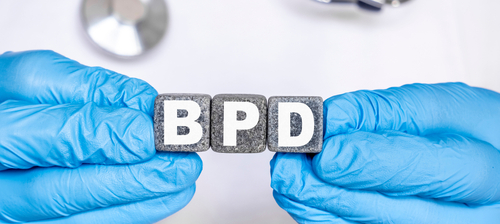
Radical acceptance is tool used in dialectical behavior therapy (DBT), that is designed to keep pain from turning into suffering. Psychologist Marsha M. Linehan developed dialectical behavior therapy in the late 1980s as a means to help better treat chronically suicidal individuals diagnosed with borderline personality disorder (BPD). It is an evidence-based psychotherapy that is founded on principles of cognitive behavioral therapy (CBT), but places greater emphasis on the psychosocial aspect of treatment. It combines standard CBT techniques for emotional regulation and reality testing with concepts derived from Buddhist meditative practice such as awareness, mindfulness, and attentiveness to current situations and emotional experiences to encourage acceptance. DBT specifically focuses on providing therapeutic skills in the following four key areas, as provided by the Linehan Institute:
- Core Mindfulness: skills focused on improving an individual’s ability to accept and be present in any given moment.
- Distress tolerance: skills focused on increasing an individual’s tolerance of negative emotions instead of attempting to avoid or escape them.
- Interpersonal effectiveness: skills focused on increasing an individual’s communication strategies.
- Emotion regulation: skills focused on helping an individual identify, name, and understand the function of emotions, and increasing one’s ability to regulate emotions.
Radical acceptance, specifically, is a skill that is addressed in the distress tolerance module. According to VeryWell Mind, “Radical acceptance can be defined as the ability to accept situations that are outside of your own control without judging them, which in turn reduces the suffering that is caused by them.” Much like every component of DBT, radical acceptance is a skill that requires practice, as it involves letting go of the need to control a situation.
How to Practice Radical Acceptance
Marsha M. Linehan provides the following ten steps for practicing Radical Acceptance using DBT:
- Watch for thoughts that you are fighting against reality.
- Remind yourself that reality cannot be changed.
- Acknowledge that something led to this moment and think about the cause of events that you are unable to accept.
- When you are in a situation that causes extreme emotions, try focusing on breathing deeply and examining the thoughts you are having (and let them pass).
- List what your behavior would look like if you did accept the facts then act accordingly.
- Create a plan of action for events that seem unacceptable, think about what you will do, and how to appropriately cope.
- Practice a feeling of total and complete acceptance through positive self-talk and relaxation strategies.
- Remain mindful of physical sensations throughout your body such as tension or stress.
- Embrace feelings such as disappointment, sadness, or grief.
- Accept that life is worth living even when experiencing pain.
Radical acceptance is achieved when one lets go of the urges to fight reality, does not succumb to the need to respond with impulsive or destructive behaviors, and releases the bitterness that may be trapping an individual in a cycle of suffering.
Disclaimer:
The information above is provided for the use of informational purposes only. The above content is not to be substituted for professional advice, diagnosis, or treatment, as in no way is it intended as an attempt to practice medicine, give specific medical advice, including, without limitation, advice concerning the topic of mental health. As such, please do not use any material provided above to disregard professional advice or delay seeking treatment.



